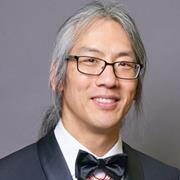Several members of the University of Toronto community have been recognized with the Order of Canada, the country’s highest civilian honour, in the latest round of appointments and promotions announced June 30, 2025.
Among the 83 individuals, recognized for their sustained and extraordinary contributions to Canada, are BME professor Tom Chau, ECE Professor Emeritus Adel Sedra, and alumnus Nathan Leipciger (ECE 5T5, Hon LLD 2019).
“The work of U of T Engineering professors Tom Chau and Adel Sedra, as well as alumnus Nathan Leipciger, has enriched our communities and our country, by breaking down barriers for children and youth, and inspiring future generations,” says U of T Engineering Dean Christopher Yip.
“On behalf of the faculty, heartfelt congratulations on receiving one of the nation’s most distinguished honours.”

Chau has been named an Officer of the Order of Canada, one of the country’s highest civilian honours. Appointment as an Officer recognizes achievement and merit of a high degree, especially service to Canada or to humanity at large.
Chau is a senior scientist at Bloorview Research Institute, Holland Bloorview Kids Rehabilitation Hospital, and a professor in the Institute of Biomedical Engineering. His lab discovers, designs and evaluates novel pathways through which people can communicate and interact with their environment in the absence of speech and gestures.
Chau’s work has creatively leveraged emerging methods at the intersection of electrical engineering, machine learning and neuroscience to directly tackle the physical inability to communicate. He is a lead inventor of more than a dozen patents on medical and assistive devices, which have given children and youth with disabilities the ability to communicate independently for the first time.
For example, Chau developed the Hummingbird, a device which detects intentional vibration of the vocal cords and converts these vibrations into digital signals to allow those who are non-verbal to communicate through technology. In addition, his award-winning Virtual Music Instrument has provided unprecedented bedside access to music and music therapy.
For individuals entirely without motor control, Chau’s team developed near-infrared spectroscopic brain-computer interfaces (BCIs), which can decode preferences, emotional state, mental arithmetic, music imagery and language tasks, simply by monitoring brain activity.
His lab proposed the first ever ultrasonic BCI, facilitating typing with mental activity alone. He also published the first auditory-tactile BCI, affording communication to children with severe impairments who have no functional vision, a challenge that eluded clinicians and scientists for decades.
In 2018, Chau received a Governor General’s Innovation Award and was appointed to the Order of Ontario. He was elected a fellow of the Royal Society of Canada in 2023.

Sedra, former U of T vice-president and provost and chair of what is now the Edward S. Rogers Sr. Department of Electrical & Computer Engineering, was appointed an Officer for his academic leadership and influential work on microelectronics and circuits.
He received a BSc degree from Cairo University, Egypt, in 1964, and his MASc and PhD degrees from the University of Toronto in 1968 and 1969 respectively. He joined the faculty of the University of Toronto in 1969, rising to the rank of Professor in 1978.
With the late Professor Emeritus K.C. Smith (ECE), Sedra co-authored Microelectronic Circuits, the best-selling engineering textbook first published in 1982. It is a classic of its genre, receiving widespread praise for the richness of its problems and the expressiveness of its prose. To date, the book has gone through eight editions, sold more than a million copies and been translated into nearly a dozen different languages.
A permanent exhibition at U of T’s Myhal Centre holds several editions and translations of Microelectronic Circuits, along with other memorabilia celebrating the legacy of the textbook.
He joined University of Waterloo in 2003 as Dean of the Faculty of Engineering and a professor of Electrical and Computer Engineering.

Leipciger, who earned a degree in electrical engineering from U of T in 1955 and received an honorary degree in 2019, was named a Member of the Order of Canada for his decades of Holocaust education efforts.
A dedicated educator with the March of the Living for more than 30 years, he has mentored thousands of students on the dangers of bigotry and intolerance, and has inspired thousands more with his personal story of resilience, love and forgiveness.
Born in Poland in 1928, Leipciger endured three months in the notorious Auschwitz concentration camp as a teenager — losing his mother and sister. He and his father Jack were also sent to numerous other concentration camps before the war ended in 1945.
The pair immigrated to Toronto in 1948, where the younger Leipciger attended high school before going on to earn his degree from U of T. He soon forged a successful career, founding a consulting engineering firm in 1962, until it was sold to Quebec engineering giant SNC-Lavalin in 2007.
He also served on the board of the Auschwitz-Birkenau State Museum in Poland for many years, guiding scores of people – from high school students to world leaders like Prime Minister Justin Trudeau – through the museum and former concentration camp site.
In recent years, he has also collaborated with Indigenous leaders and survivors of Canadian residential schools to highlight the common threads that run through systemic oppression and genocide, and to urge audiences to practice acceptance and respect.





